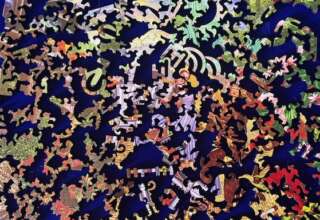
In the process of bringing about more orderly and creditable city services, the city manager temporarily created a system that was less ordered and less creditable (at least among employees):
. . . communication became strained and fragmented to manifest as “turfing” or a type of “them versus us” phenomenon. This was most apparent within the top Executive Management team’s ineptness in honest, direct discussions across function. Effective, productive communication simply did not exist. . . Managers were afraid to talk candidly with certain others due to some “fear of consequence.” . . . Departments blamed other departments for their inefficiency to deliver service on time. . . .Some departments . . . felt like and acted as if they were in a war zone. Cliques whispered about their manager and made other cliques their enemy. In addition, lots of complaining occurred revolving around the so-called “imposed changes” they were forced to undergo. Fragmentation in allegiance to the boss and to client service was quite evident.
This isn’t the whole story. The city manager was very effective in creating a public image of the new changes as being responsive to public needs. He had gained the full support of the Mayor and the media in his efforts to decentralize the operations of the city. He offered a portrait of order to the public. Thus, at one level and from one perspective there is order. At another level and from another perspective there is chaos. A similar story can be told in many public and private organizations.
Conclusions
In this essay I have touched on one level of appreciation regarding leadership—focusing on organizational culture and context. I turn in the next essay to subtler issues regarding both traditional and newly emerging models of leadership that are themselves inherently appreciative. I specifically introduce a model of leadership that derives from traditional metaphors: lover, partner, and servant. I then shift to a model of leadership that is based on decidedly nontraditional metaphors: conductor, jerk, and rogue. Finally, I turn to a conception of leadership that integrates the old and new, while bringing distinct clarity to the notion of appreciative leadership. At various points throughout this next essay, I rely heavily on the appreciative wisdom offered by the remarkable 20th Century philosopher and scientist, Teilhard de Chardin. I turn to him specifically in presenting the final, integrating model of leadership
__________
i Edgar Schein, Organizational Culture and Leadership. San Francisco: Jossey-Bass, 1985.
iiPaul Hershey and Kenneth Blanchard. The Management of Organizational Behavior. (3rd ed.) Englewood Cliffs, N.J.: Prentice-Hall, 1977.
iiiFred Fiedler. A Theory of Leadership Effectiveness. New York: McGraw-Hill, 1967; V. H. Vroom and P. W. Yetton. Leadership and Decision Making. Pittsburgh, Pa: University of Pittsburg Press, 1973; and Jane Woodward. Management and Technology. London: HMSO, 1958.
iv Robert Blake and Jane Mouton. Managerial Grid III (3rd ed.). Houston, Tex.: Gulf, 1985.
v Chris Argyris and Donald Schon, Organizational Learning. Reading, Mass.: Addison-Wesley, 1978; Peter Senge. The Fifth Discipline. New York: Doubleday, 1990.
vi Margaret Wheatley. Leadership and The New Science. San Francisco: Berrett-Koehler, 1999; William Bergquist, The Postmodern Organization. San Francisco: Jossey-Bass, 1994; Ralph Stacey. Complexity and Creativity in Organizations. San Francisco: Berrett-Koehler, 1996.
vii James Gleick. Chaos. New York: Viking Penguin,1987; William Bergquist. The Postmodern Organization. San Francisco: Jossey-Bass, 1994.
—————






